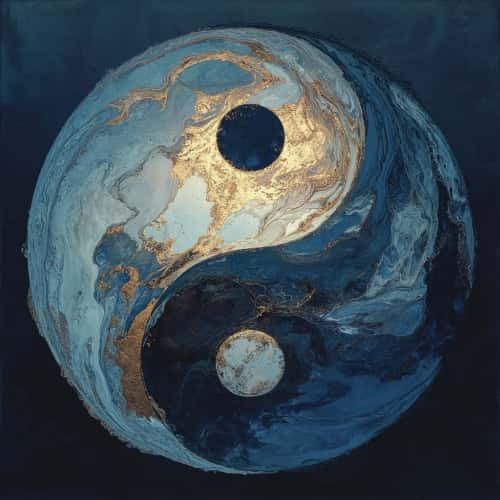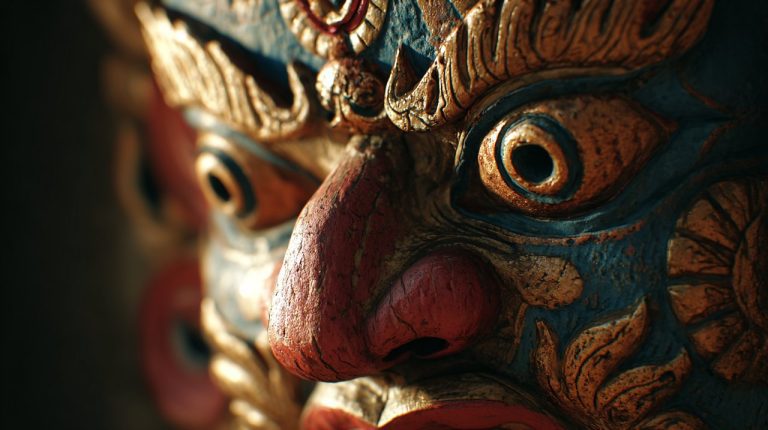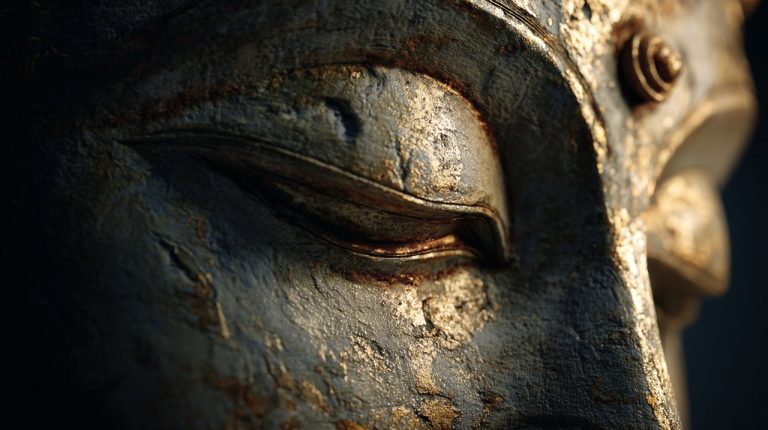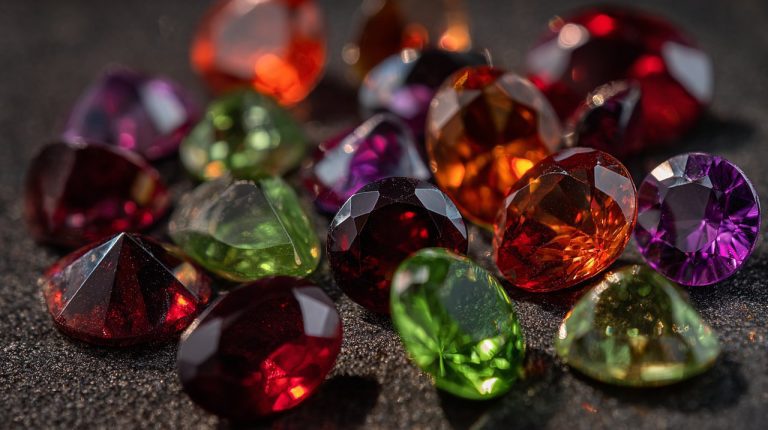How Much Is Amethyst Worth? Factors Influencing Its Price Per Carat & Spiritual Value
Amethyst, with its captivating purple hues, always brings up an interesting question: how do we truly measure its worth? Is it purely about market price, driven by geological rarity, or does its value extend into our personal experiences and the subtle energetic properties we perceive? The answer, like the stone itself, is wonderfully layered. Amethyst, you see, holds a unique dual value: a material price based on gemological standards, and a powerful personal worth derived from its perceived influence on our well-being. When we consider both, we gain a much fuller appreciation for this extraordinary crystal.
The Market’s Gaze: What Drives Amethyst’s Price Per Carat?
So, what actually determines how much amethyst costs? Like any valuable item, its market price is shaped by a few clear, objective characteristics. Think of it like an art appraiser looking at a painting: these factors help us tell the difference between an everyday piece and a truly exceptional one.
The 「Four C’s」 and Beyond: Color, Clarity, Cut, and Carat Weight
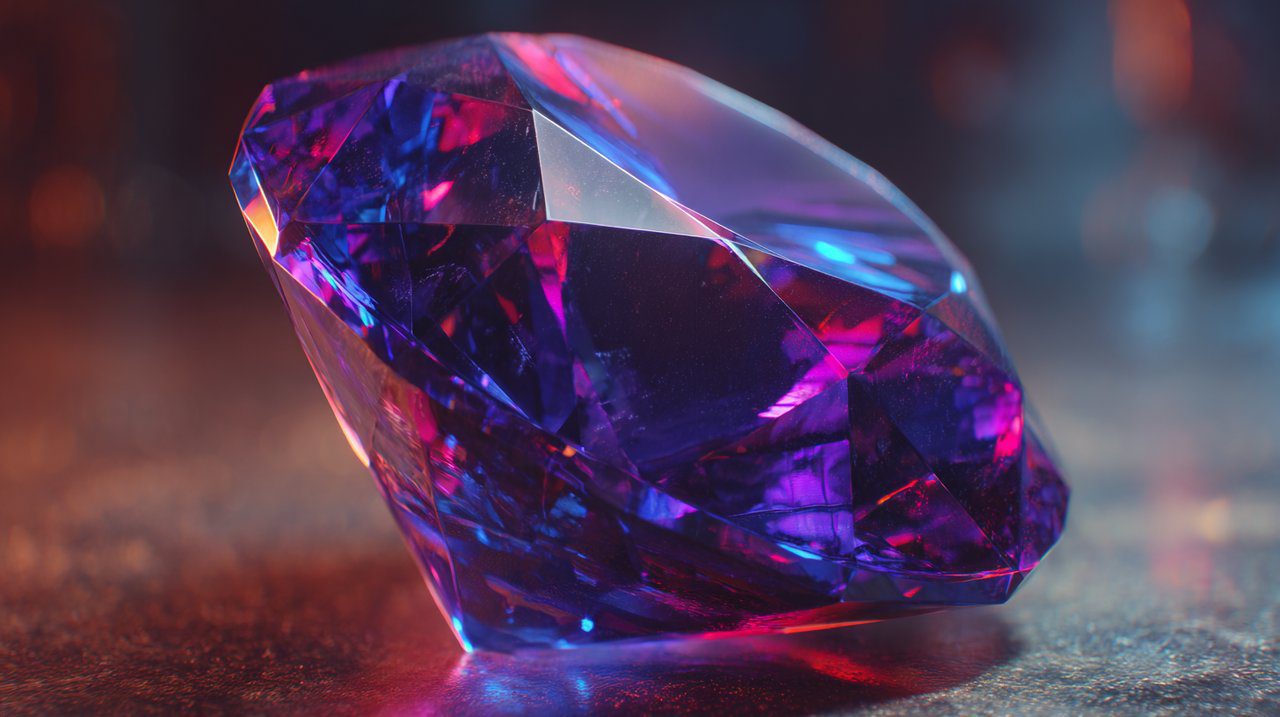
When we talk about amethyst’s price per carat, we’re really looking at a few crucial elements. These are similar to the famous 「Four C’s」 used for diamonds, but with a few amethyst-specific nuances:
- Color: This is often the big one. The most prized amethysts show off a deep, rich purple, sometimes with hints of red or blue. What really makes a difference is an even color, without any lighter or darker zones. Interestingly, lighter, pinkish-violet shades, often called 「Rose de France,」 have also become quite popular.
- Clarity: For top-tier amethyst, you want it to be transparent and free from any visible flaws or inclusions. While a few tiny imperfections might be okay in more affordable pieces, those 「eye-clean」 specimens — meaning you can’t see any flaws with the naked eye — are definitely worth more.
- Cut: A skilled cut can truly make the gem sparkle and bring out its best color, naturally boosting its value. You’ll commonly see shapes like oval, round, cushion, and emerald. More intricate or 「fantasy」 cuts often fetch higher prices, and a good cut can even highlight those beautiful red flashes within the stone.
- Carat Weight: Generally, bigger stones cost more, but here’s a key point: amethyst’s value per carat goes up gradually, not in huge jumps. That’s because large amethyst crystals are actually pretty common. So, it’s not unusual for a smaller, high-quality amethyst to be more expensive than a larger, lower-quality one.
Origins and Rarity: How Amethyst Sources and Supply Affect Cost
Amethyst is found all over the world, which is pretty cool! But some places are definitely known for producing stones of outstanding quality. Historically, the Siberian mines in Russia were famous for the absolute finest amethysts—think rich purple with those amazing red and blue flashes. These days, 「Siberian」 often describes that sought-after color grade, rather than the stone’s actual birthplace.
Today, big sources include Brazil, Bolivia, Uruguay, and Zambia. Brazil is great for huge amethysts, but stones from Uruguay and Zambia are often favored for their deeper, more saturated colors, even if they tend to be smaller. It’s fascinating how the sheer abundance of amethyst, especially after those massive deposits were found in Brazil in the 19th century, made it much more accessible. This actually shifted its status from a 「cardinal gem」 to what we now call a semi-precious stone.
Understanding Raw Amethyst Value vs. Polished Pieces
The way amethyst is presented makes a big difference in its market price. For example, the value of raw amethyst found in clusters or geodes usually falls between $10 and $200+, depending on its size and where it came from. People often value these pieces for their natural beauty and unique crystal formations.
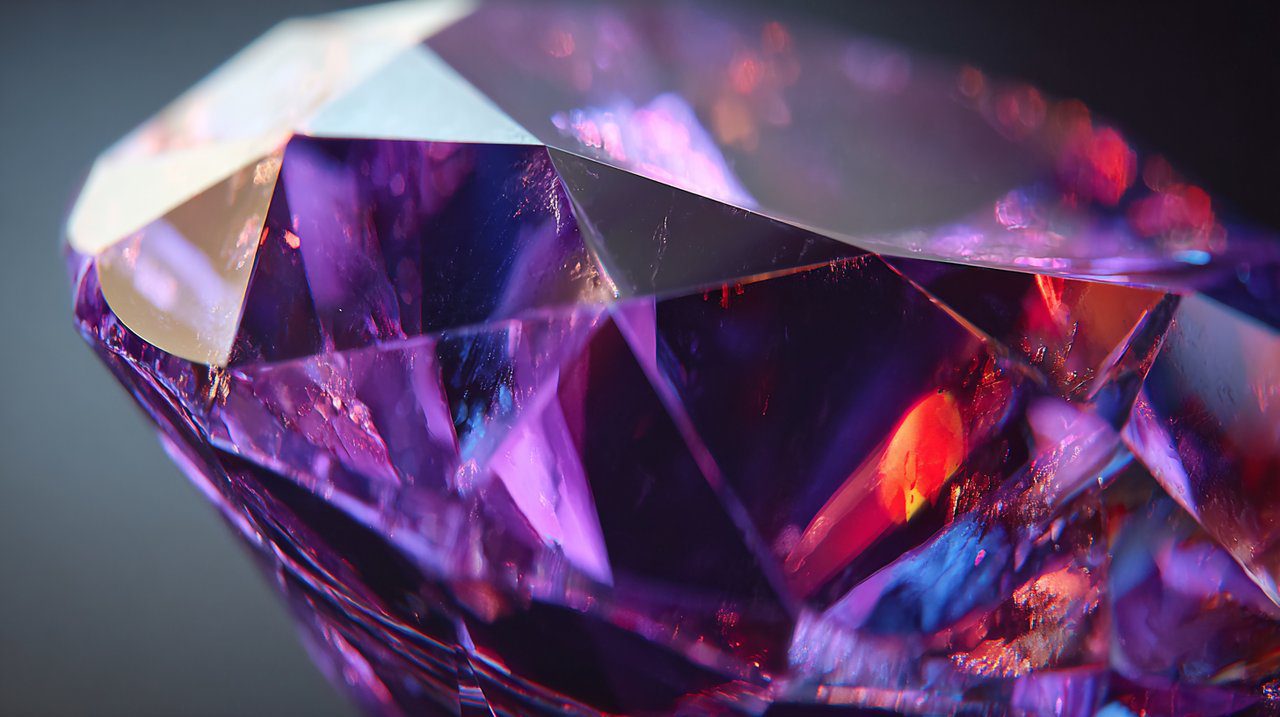
The wholesale price for large quantities of raw amethyst can range from $10 to $100 per kilogram, influenced by grade.
Now, if we look at faceted or polished amethyst, the kind used in jewelry, it naturally costs more. That’s because of all the skilled labor involved in cutting and finishing it. To give you an idea, a lower-quality faceted amethyst might start around $2 per carat, while a better-colored piece from Brazil could be $5-10 per carat or even more. Truly high-grade faceted amethyst can easily command $20 to $50+ per carat.
Amethyst’s Deeper Resonance: Its Spiritual Worth
Beyond its physical beauty, amethyst holds a really deep spiritual significance for many people. This kind of value isn’t something you can measure with money; instead, it resonates on a very personal, energetic level. What’s fascinating is how its perceived properties can act as a form of 「environmental psychology,」 subtly influencing our inner state and well-being.
A Stone of Serenity: Exploring Amethyst Spiritual Meaning
Amethyst is widely known for its calming and protective qualities. Its serene purple color, in itself, often brings associations of tranquility and peace. Think about it: ancient civilizations, from the Egyptians to the Greeks, deeply respected amethyst, believing it offered protection, prevented intoxication, and even promoted mental clarity. From an 「environmental psychology」 perspective, this powerful historical belief imbues the stone with a strong psychological anchor for calm, underscoring the broader impact healing gemstones can have on our well-being.La Importancia de las Gemas Sanadoras para tu Salud
Amethyst is known for bringing a sense of calm and clarity, helping to alleviate worries and fears, and encouraging clear thinking.
This perceived amethyst’s spiritual meaning really extends to helping us find emotional balance, ease stress, and let go of negative feelings. For many, simply having amethyst around encourages a more centered and grounded feeling. It acts as a gentle, yet powerful, visual reminder to seek inner peace in our busy lives.
Connecting with Energy: Amethyst and the Amethyst Chakra

In many spiritual traditions, amethyst is deeply connected to what are considered the body’s higher energy centers—specifically, the crown and third eye chakras. While these concepts are ancient, we can view this connection as a way the stone serves as a focal point for intentional mental states.
- Crown Chakra: This chakra, located at the top of the head, is often linked with spirituality, wisdom, and higher consciousness. From a psychological standpoint, placing amethyst near this area could serve as a powerful visual cue, encouraging focused meditation and an open mindset towards spiritual growth.
- Third Eye Chakra: Found between the eyebrows, this chakra is said to govern intuition, insight, and inner vision. Holding or meditating with amethyst here can act as a deliberate anchor, helping to quiet external distractions and foster a deeper connection to one’s inner wisdom and intuitive thoughts.
It’s interesting to note that people who work with these amethyst chakra connections often report greater mental clarity during meditation and a more profound sense of spiritual awareness. This really highlights the power of focused intention combined with symbolic objects.
Nurturing Your Stone: The Importance of How to Cleanse Amethyst
If you’re using amethyst for its spiritual properties, you’ll often hear about the importance of 「cleansing」 it. This practice is seen as a way to clear out any stagnant or negative energies the stone might have absorbed. I like to think of it much like hitting the refresh button on your own mental space after a particularly busy week—it’s about resetting its perceived energetic state.
So, how do people typically approach how to cleanse amethyst? Here are some popular methods:
- Water Cleansing: A straightforward and effective method is simply rinsing your amethyst under cold running water. Some people prefer natural sources like streams, while others use filtered tap water. For a gentle physical clean, lukewarm water with a mild soap works well.
- Salt Bath: A salt bath is believed to draw out impurities on a deeper energetic level. You’d typically dissolve sea salt in water, submerge the amethyst for several hours or even overnight, and then rinse it thoroughly.
- Smudging: Another common cleansing ritual involves passing the amethyst through the smoke of burning sage or frankincense. This is often seen as a way to purify and reset its energy.
- Moonlight Charging: Placing your amethyst under the full moonlight is considered a gentle and natural way to cleanse and rejuvenate its vitality. It’s almost like giving it a gentle energetic bath.
A crucial practical note: amethyst can be sensitive to sudden temperature changes, extended exposure to intense light, and harsh chemicals. So, be mindful when cleansing! Ultimately, regular cleansing is a personal practice, but it’s often key for maintaining the stone’s perceived energetic properties.
Bridging Worlds: The Interplay of Material and Mystical Value
It’s fascinating to see how amethyst’s market price and its spiritual significance aren’t completely separate; in fact, they often intertwine. This interplay really shapes our overall perception of its worth. Think about it: a rare, high-quality amethyst isn’t just admired for its striking physical beauty, but often also for its perceived enhanced energetic presence.
From Adornment to Amulet: The Role of Amethyst Jewelry
Amethyst jewelry offers a perfect example of how material beauty and mystical value can merge. A well-cut amethyst, beautifully set in a ring or necklace, is certainly appreciated for its aesthetic appeal and the craftsmanship involved. But at the same time, the wearer might specifically choose it for its perceived calming properties or its symbolic connection to higher consciousness. It’s a blend of outward beauty and inner intention, a concept beautifully mirrored in other pieces like rose quartz jewelry, valued for its own unique properties of love and healing.Rose Quartz Jewelry: A Pragmatic Guide to Love & Healing
Wearing amethyst allows its energy to remain in constant contact with the body, potentially helping to keep the crown chakra balanced and open.
Whether you choose a simple tumbled stone or an elaborate piece of amethyst jewelry, the decision often reflects a desire. It’s a desire to integrate both beauty and energetic support into your daily life. This is where the 「environmental psychology」 really comes into play.
The Personal Equation: How Individual Belief Shapes 「Worth」
Ultimately, the true 「worth」 of amethyst, much like a cherished family heirloom or a beloved piece of art, is deeply personal. Market factors certainly give us a baseline for its monetary value, but an individual’s connection to a stone can elevate its significance far beyond any price tag. The psychological comfort or spiritual insights we gain from amethyst are invaluable returns that simply can’t be measured in carats or dollars. This personal equation means even a modest, less expensive piece can hold immense value for its owner if it truly resonates with their intentions and beliefs.
Your Amethyst, Your Valuation: A Holistic Approach
So, when we come back to our initial question about amethyst’s true worth, it becomes clear it’s a fascinating blend. This extraordinary variety of quartz truly embodies a spectrum of value, moving from its geological origins all the way to becoming a treasured personal possession. It involves both the objective criteria of the gem market and that incredibly powerful, subjective realm of human experience and spiritual connection.
The tangible market price, shaped by factors like its color, clarity, cut, and origin, gives us a solid framework for its material worth. But at the same time, its perceived ability to bring serenity, enhance intuition, and align with the amethyst chakra offers an immense spiritual dimension. It’s a holistic view that truly captures its essence.
The true value of amethyst is a rich blend of its tangible market attributes and its powerful amethyst’s spiritual meaning.
As you consider amethyst—whether for your collection, as elegant amethyst jewelry, or for your spiritual practice—I encourage you to reflect on what truly resonates with you. Is it the allure of a perfectly cut, deep purple gem? Or is it the quiet sense of calm it brings to your meditation space? Perhaps, like me, you find it’s a bit of both. The journey of understanding amethyst’s worth is ultimately an invitation to explore your own criteria for value, recognizing that both the material and mystical aspects contribute to the unique appeal of this extraordinary stone.
💡 Preguntas Frecuentes
The market price of amethyst per carat is primarily influenced by its color (deep, rich purple with even tone is most prized), clarity (eye-clean specimens are more valuable), cut (skilled cuts enhance sparkle and color), and carat weight (though value per carat increases gradually). Additional factors include its origin, with historically significant sources like Siberia commanding attention, and the supply chain, which has made amethyst more accessible and thus semi-precious.
While amethyst is found globally, certain origins are known for producing stones of exceptional quality. Historically, Siberian amethysts were prized for their deep purple with red and blue flashes. Today, Brazil is a major source for large crystals, while Uruguay and Zambia are often favored for their deeper, more saturated colors, even if the stones are smaller. The term 'Siberian' is often used to describe this high-grade color rather than the actual geographical source.
Raw amethyst, such as in clusters or geodes, typically has a lower market value, ranging from $10 to $200+ for clusters and $10 to $100 per kilogram wholesale for large quantities, depending on size and grade. Polished or faceted amethyst, intended for jewelry, commands a higher price due to the skilled labor involved in cutting and finishing. This can range from around $2 per carat for lower quality to $20-$50+ per carat for high-grade stones.
Amethyst holds significant spiritual and personal worth for many due to its perceived properties of serenity, calm, and protection. It is believed to help alleviate worries, fears, and stress, promoting clear thinking and emotional balance. This 'environmental psychology' aspect means its presence can subtly influence our inner state and well-being, acting as a visual reminder to seek inner peace.
Amethyst is deeply connected to the crown chakra (linked to spirituality and higher consciousness) and the third eye chakra (governing intuition and inner vision). In practice, placing amethyst near the crown chakra can encourage focused meditation and spiritual growth, while holding it near the third eye can help quiet distractions and foster inner wisdom. This connection serves as a focal point for intentional mental states and is often reported to enhance mental clarity and spiritual awareness during meditation.

